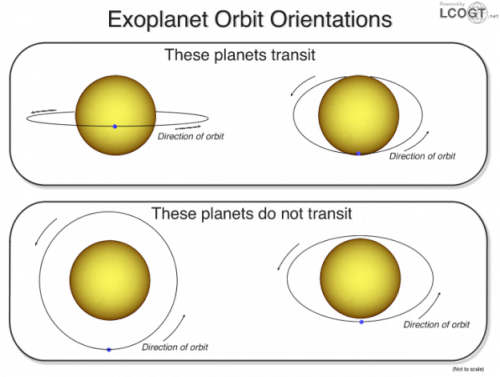
There are nearly 2,000 exoplanets – worlds beyond our solar system – known so far, but information about them doesn’t come easily. That’s why a team of astronomers is excited about its ground-based detection – for the first time, ever – of the shallow dip in starlight that occurs when the super-Earth 55 Cancri e passes in front of its star, as seen from Earth. These astronomers said on December 1, 2014 that the technique they used to see this super-Earth transit should let other astronomers use ground-based telescopes to characterize the many small planets expected to be detected in the next few years by NASA’s TESS mission and ESA’s PLATO mission, scheduled for launch in 2017 and 2024, respectively. The Astrophysical Journal Letters published the astronomers’ findings.
The term super-Earth doesn’t imply anything about habitability. It refers only to a world’s mass. A super-Earth has a mass greater than our Earth’s, but smaller than our solar system’s smaller gas giants Uranus and Neptune (15 and 17 Earth masses).
Exoplanet transits are a tried and true method both for detecting planets beyond our solar system, and also learning more about them, but this method has led to a bias towards finding big planets around small stars.
Super-Earth like 55 Cancri e, which is innermost in a system of five known planets orbiting a sunlike star, have been tough to detect from the ground using the transit method. It’s Earth’s roiling atmosphere that makes this sort of observation extremely difficult. That’s why 55 Cancri e’s previous transits have been observed via space-borne telescopes.
Until now, the transits of only one other super-Earth, GJ 1214b circling a red dwarf, had been observed with ground-based telescopes.

The astronomers who made the ground-based detection of 55 Cancri e’s transit said this new result:
…raises the prospects of characterizing dozens of super-Earths likely to be revealed by upcoming surveys.
The team includes lead author Ernst de Mooij of Queen’s University Belfast, Ray Jayawardhana of York University in Toronto, Mercedes Lopez-Morales of the Harvard-Smithsonian Center for Astrophysics, and Raine Karjalainen and Marie Hrudkova of the Isaac Newton Group of Telescopes in Spain. They used the 2.5-meter Nordic Optical Telescope on the island of La Palma, Spain to make the detection.
The star 55 Cancri is only 40 light-years away. It’s visible to the unaided eye as a faint star in the direction of our constellation Cancer the Crab. The transit of the super-Earth 55 Cancri e leads to a change in this star’s light that is exceedingly small. The planet dims the star by 1/2000th (or 0.05%) for almost two hours. Team member Ray Jayawardhana said:
It’s remarkable what we can do by pushing the limits of existing telescopes and instruments, despite the complications posed by the Earth’s own turbulent atmosphere.
Observations like these are paving the way as we strive towards searching for signs of life on alien planets from afar. Remote sensing across tens of light-years isn’t easy, but it can be done with the right technique and a bit of ingenuity.
By the way, NASA’s Spitzer Space Telescope has already surprising details about the planet planet 55 Cancri e, which was discovered in 2004. The astronomers described this world in their press release as:
… supersized and superheated … about twice as big and eight times as massive as the Earth. With a period of [approximately 18 hours, it is the innermost of five planets in the system. Because of its proximity to the host star, the planet’s dayside temperature reaches over 1,700° Celsius – hot enough to melt metal – with conditions quite inhospitable to life.
The Spitzer results also suggest that about a fifth of the planet’s mass must be made of light elements and compounds, including water.
However, in the intense heat of 55 Cancri e’s very close sun, those light materials would exist in a supercritical state – between that of a liquid and a gas – and might sizzle out of the planet’s surface.
Bottom line: An international team of astronomers has made the first ground-based detection of the transit of the exoplanet 55 Cancri e in front of its star. They say other astronomers will be able to use their technique to characterize other super-Earths expected to be found in upcoming space surveys.











